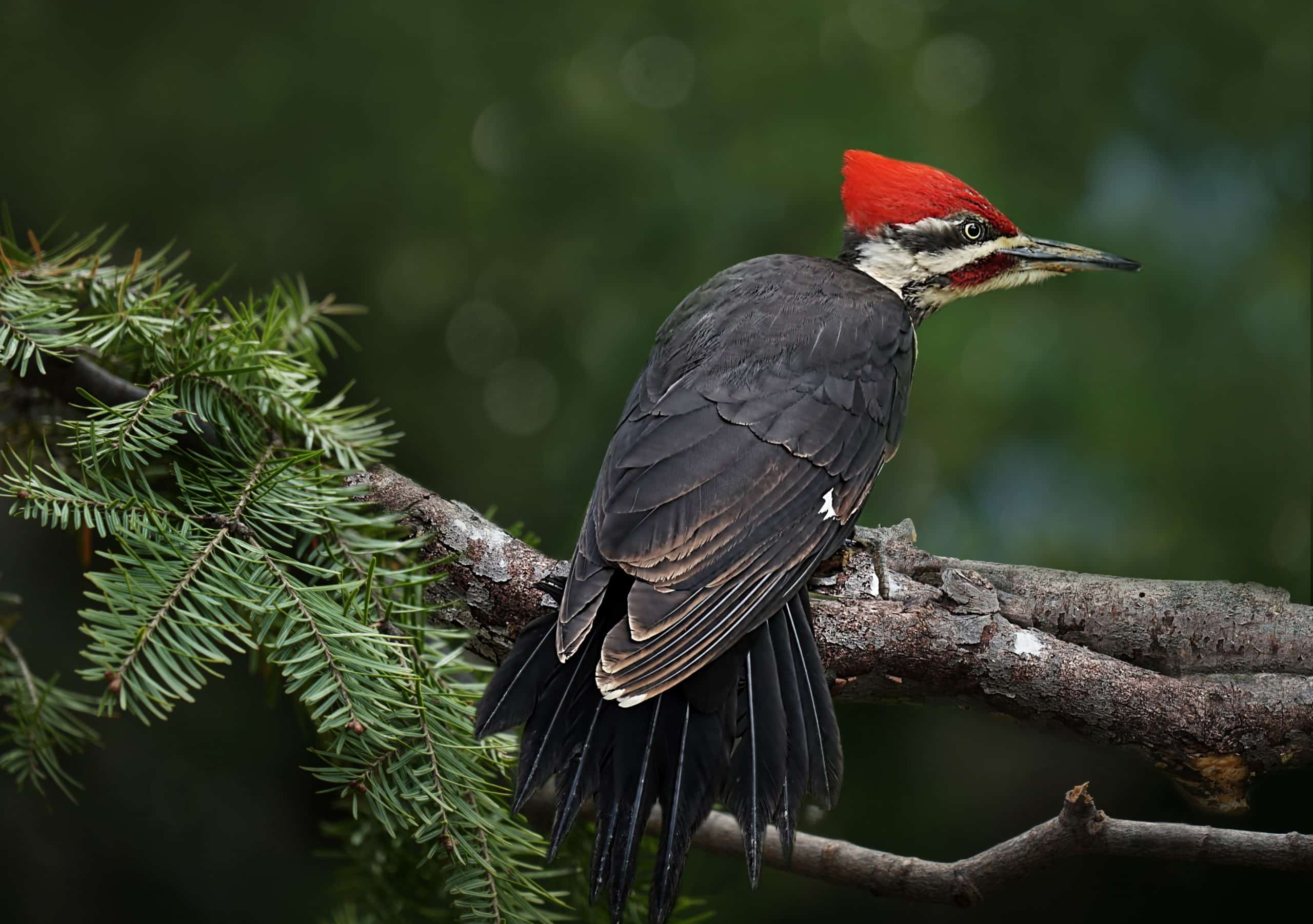Woodpeckers: A Comprehensive Guide to Understanding These Unique Birds
Woodpeckers, with their unique actions and physical qualities, have actually long mesmerized the inquisitiveness of ornithologists and nature lovers alike. As we discover the intricate composition, varied types, and environmental value of woodpeckers, a much deeper gratitude for these one-of-a-kind birds and the mysteries they hold unravels.

Woodpeckers' Drumming Behavior
Woodpeckers exhibit a balanced and precise drumming behavior that offers numerous crucial features in their lives. This habits is mainly related to communication, territory defense, and foraging. The distinct drumming audio is produced by the fast pecking of their beaks against tough surface areas such as tree trunks, branches, and even metal objects.
Communication is an essential aspect of woodpecker actions, and drumming plays a considerable role in this process. Woodpeckers make use of drumming to establish their presence, attract friends, and preserve contact with their companions and children. The frequency, strength, and duration of drumming series communicate certain messages to other woodpeckers in the location.
Along with communication, woodpeckers make use of drumming habits for territory protection. Woodpeckers in Florida. The loud and repetitive drumming works as an alerting to prospective intruders, indicating that the area is currently declared. By developing their area through drumming, woodpeckers lower the chance of disputes over valuable resources such as food and nesting websites
In addition, woodpeckers likewise use drumming as a foraging technique. The balanced pecking helps them situate insects concealing beneath the bark of trees by producing vibrations that interrupt the target's cover-up. This actions showcases the adaptability and ingenuity of woodpeckers in utilizing their drumming skills for numerous important objectives.
Unique Adjustments for Tree Climbing
Having mastered the art of drumming to communicate, defend area, and forage, woodpeckers have developed special adjustments that promote their exceptional climbing up capacities in their arboreal environments. Woodpeckers have zygodactyl feet, with 2 toes aiming onward and 2 toes aiming in reverse. These tail plumes give security and equilibrium, making it possible for woodpeckers to steer up tree trunks with accuracy and dexterity.
Moreover, woodpeckers have effective neck muscle mass and an unique skull framework that help in their climbing up capacities. Their solid neck muscular tissues enable them to quickly peck at tree bark without experiencing whiplash, while their thick skull and tiny mind function as shock absorbers, safeguarding them from the effect of duplicated drumming. These adjustments collectively enable woodpeckers to navigate the upright globe of trees with efficiency and poise.

Duty of Woodpeckers in Communities
Playing a pivotal function in woodland ecological communities, woodpeckers contribute dramatically to the balance and health and wellness of their environments through their this hyperlink distinct habits and communications with other species. One of the crucial eco-friendly features of woodpeckers is their role in useful link managing insect populaces. By foraging for pests under the bark of trees, woodpeckers aid regulate pest populations, stopping episodes that can hurt the overall health and wellness of the forest. In addition, woodpeckers develop cavities in trees that work as vital nesting sites for a variety of other bird species, promoting biodiversity within the environment.
In addition, the drumming and articulations of woodpeckers play an essential function in communication and territory establishment. These audios not just serve to attract mates yet additionally assist define boundaries in between different woodpecker territories, reducing problems and advertising a harmonious coexistence within the woodland neighborhood. In general, the presence of woodpeckers in woodland environments highlights their significance as keystone species, affecting the dynamics and functioning of these environments in diverse ways.
Makeup: Specialized Beaks and Feet
In the intricate internet of forest environments, the specialized beaks and feet of woodpeckers are important adjustments that allow them to satisfy their critical eco-friendly functions. Woodpeckers have unique anatomical attributes that are specifically created to assist them in their foraging and nesting behaviors.
One of the most distinguishing characteristic of woodpeckers is their solid, chisel-shaped beaks. These beaks are flawlessly adapted for boring right into timber to uncover bugs, larvae, and sap surprise beneath the bark of trees. The strong muscle mass and tough structure of their beaks enable woodpeckers to eat a price of approximately 20 times per second without causing damage to their my response heads.
In addition, woodpeckers have actually specialized feet that aid in their acrobatic climbing capabilities. Their feet have 2 toes aiming onward and 2 toes pointing backward, offering a solid hold on upright surface areas (Woodpeckers in Florida). This unique foot arrangement, along with rigid tail feathers that function as a helpful prop, permits woodpeckers to stick to tree trunks and branches with convenience while they look for food or dig deep into nesting dental caries
Woodpecker Species Diversity
Woodpeckers are a diverse team of birds located across various ecosystems worldwide, with over 200 well-known types displaying adaptations to various atmospheres. Woodpeckers have advanced to inhabit an array of settings, from woodlands and woodlands to meadows and deserts, each offering special difficulties that have actually affected the evolution of distinctive woodpecker types.
These adjustments make it possible for woodpeckers to forage effectively in their corresponding environments, decreasing competitors amongst species and promoting specific niche distinction. Additionally, geographic seclusion and historical aspects have actually played a role in shaping the distribution and variety of woodpecker varieties, leading to the wide range of specialized adaptations seen in these interesting birds.

Conclusion
In conclusion, woodpeckers are remarkable birds that exhibit one-of-a-kind drumming behavior, specialized adjustments for tree climbing, and play important functions in ecosystems. With a varied array of woodpecker types located worldwide, these birds are important for keeping the health and balance of woodlands and woodlands.
Comments on “Coming Across Woodpeckers in Florida Types: Habitats and Habits”